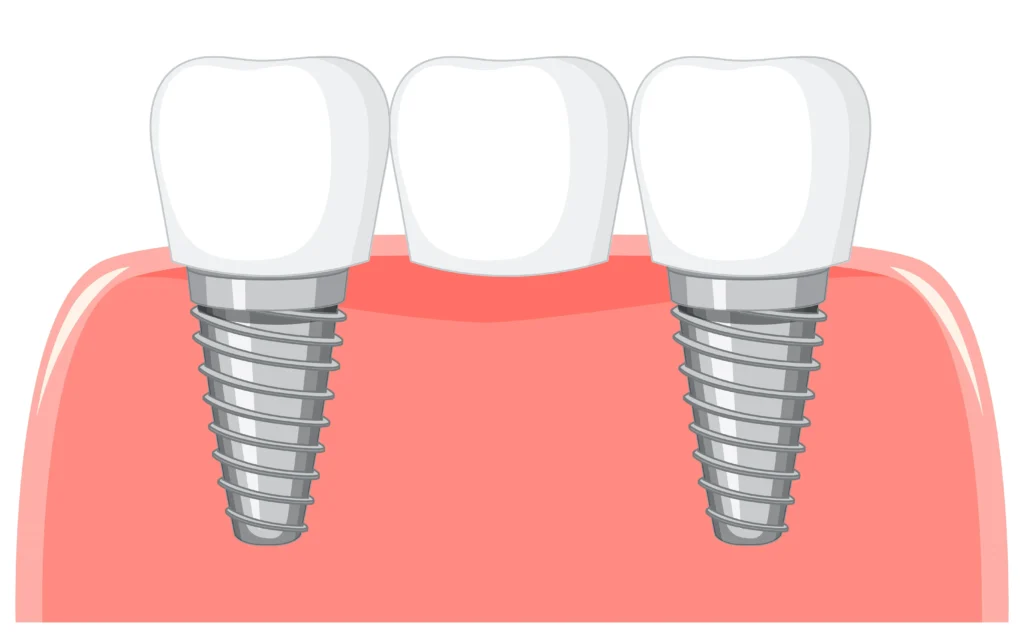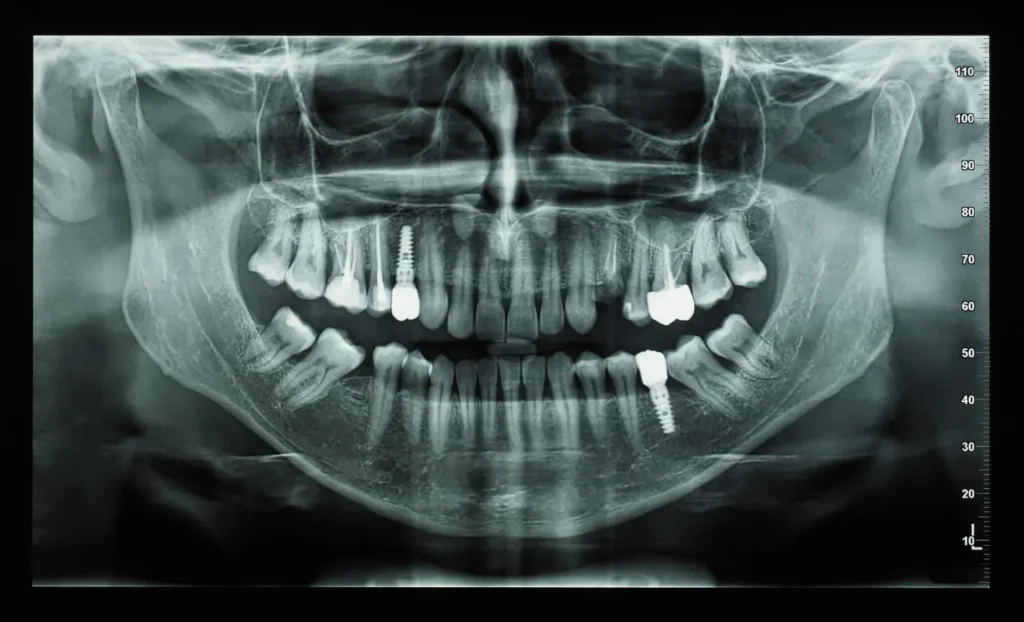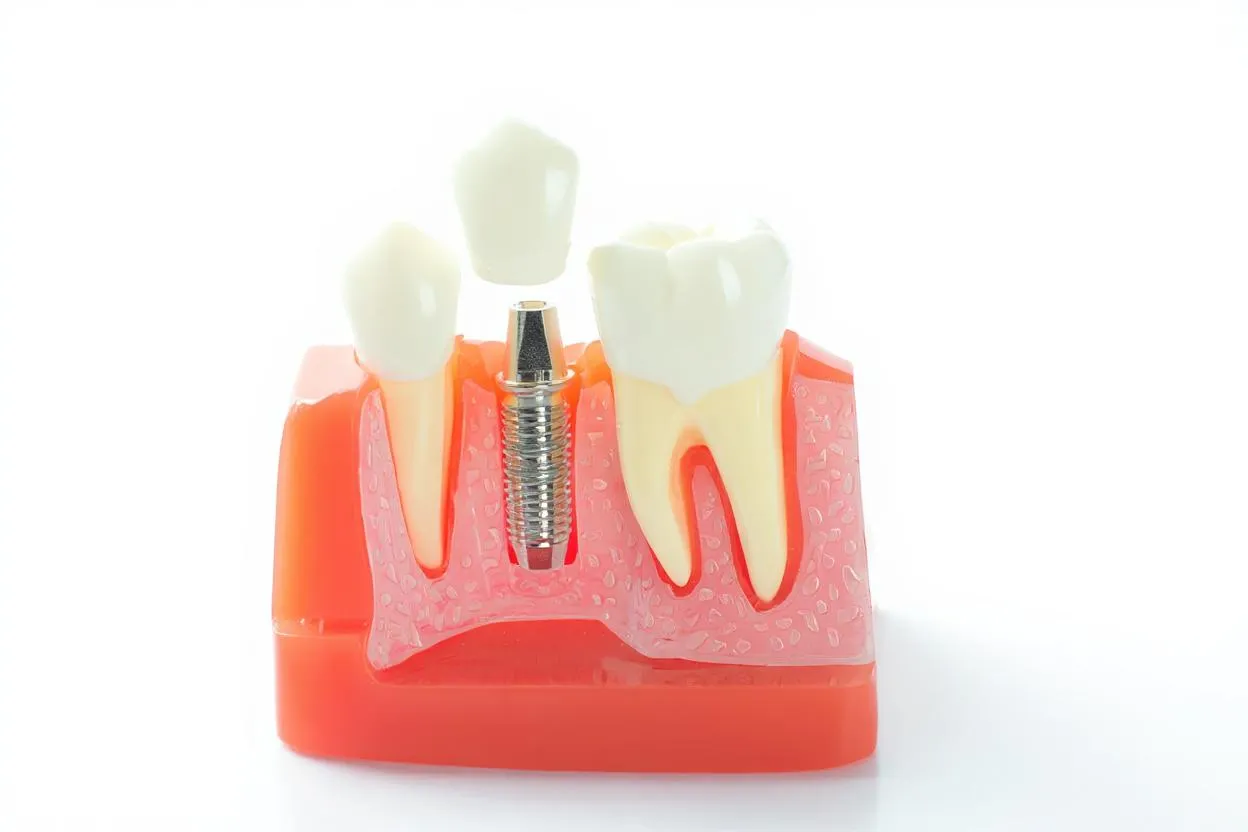Tooth loss not only affects your smile. It can impact everything from how you chew and speak to your overall facial structure. Left untreated, missing teeth may also lead to jawbone deterioration, shifting of surrounding teeth, and changes in bite alignment.
Thankfully, modern dental implant systems offer a reliable, long-term solution. Whether you’re missing a single tooth or a full arch, the different types of dental implants available today are designed to restore both form and function, improving oral health and confidence alike.
Main types of dental implants based on placement and purpose
Dental implants are primarily classified based on how they are anchored and what purpose they serve. Understanding these categories can help patients and practitioners decide which system best suits each case.
Based on placement:
- Endosteal implants – Surgically inserted into the jawbone; most commonly used
- Subperiosteal implants – Placed under the gum but on top of the jawbone
- Zygomatic implants – Anchored into the cheekbone, for cases with severe upper jaw bone loss
Based on function:
- Single tooth implants – Replace a single missing tooth
- Multiple tooth implants – Restore gaps using bridges or All-on‑4 systems
- Implant-supported dentures – Secure full dentures using implants for retention
- Mini implants – Narrow diameter implants for limited bone or stabilising loose dentures
- Immediate-load implants – Allow same-day temporary restoration
- Two-stage implants – Require a healing phase before crown placement
- Ball-and-socket systems – Secure removable dentures in place with locking mechanisms
Each category accommodates specific clinical and anatomical requirements, ensuring tailored solutions.
Endosteal implants: The most common solution
Endosteal implants are by far the most frequently used type. These titanium posts are inserted directly into the jawbone, where they fuse with the bone in a process called osseointegration. Once healed, they provide a stable foundation for prosthetics such as crowns, bridges, or dentures.
Ideal for:
- Patients with healthy jawbone volume
- Single or multiple tooth replacements
- Those desiring a permanent, non-removable solution
Benefits:
- Longest track record of success
- Versatile across many clinical scenarios
- Support fixed or removable restorations
The success rate of endosteal implants is notably high. A meta-analysis published on PubMed found implant survival rates to be above 96% after ten years, making them one of the most predictable dental treatments available today.
Endosteal systems are often used in conjunction with resin-bonded bridges and implant-supported dentures for more complex rehabilitation.
Subperiosteal implants for limited jawbone support
When patients do not have enough healthy bone to support endosteal implants, and bone grafting is not an option, subperiosteal implants may be considered.
These implants:
- Sit above the jawbone but beneath the gum tissue
- Use a metal framework that rests on the bone
- Are secured once the gum heals over the frame
Although their use has declined due to advances in bone grafting and zygomatic implants, subperiosteal implants still offer a solution for select cases, particularly when surgical intervention must be minimised.
Zygomatic implants: Support from the cheekbone
For patients with significant bone loss in the upper jaw (maxilla), traditional implants may not be viable. Zygomatic implants bypass the maxillary bone altogether, anchoring into the zygoma or cheekbone, which offers sufficient density for support.
Used when:
- Bone grafting is not feasible or desirable
- There is severe atrophy of the upper jaw
- Immediate full-arch restoration is required
Due to their complexity, these implants should only be placed by clinicians with advanced surgical training. They can be a game-changer for patients previously told they were not suitable candidates for implants.
Mini implants for narrow spaces and dentures
Mini dental implants are significantly narrower than traditional types, typically under 3mm in diameter. While they function similarly to endosteal implants, they’re generally used in less demanding clinical situations.
They are appropriate for:
- Small tooth replacements (e.g., incisors)
- Patients with limited bone volume
- Stabilising loose or ill-fitting dentures
Advantages include:
- Minimally invasive placement
- Reduced healing time
- Often placed without sutures
However, they are not suitable for high-pressure areas, such as the molar region, due to their lower mechanical strength.
Immediate-load implants for same-day aesthetics
Also known as “teeth in a day”, immediate-load implants allow for temporary crowns or bridges to be placed immediately after the implant is inserted, avoiding months of waiting.
Eligibility depends on:
- Adequate bone quality and volume
- High initial stability at the time of placement
- No signs of infection or inflammation
Immediate-load implants offer psychological and functional benefits, especially for patients concerned with gaps in visible areas. However, not everyone qualifies. Success largely depends on proper case selection and good oral hygiene post-procedure.
All-on‑4 and full-arch restorations
All-on‑4 systems use four (sometimes six) implants to support an entire arch of teeth, upper or lower. Unlike traditional implant methods that may require 8–10 implants, All-on‑4 delivers full-mouth restoration with fewer surgical sites.
Key benefits:
- Reduced number of implants
- Often avoids the need for bone grafting
- Enables immediate loading with a fixed denture
- Ideal for full edentulism (complete tooth loss)
All-on-4 suits patients seeking a fixed solution with fewer procedures and faster outcomes. This method offers more chewing function and comfort than traditional dentures.
Implant-supported bridges for multi-tooth loss

When several adjacent teeth are missing, an implant-supported bridge may be more cost-effective than placing an implant for each gap.
Best suited for:
- 3+ missing teeth in a row
- Patients with strong adjacent bone support
- Avoiding overloading of remaining teeth
These bridges not only restore function and appearance but also help preserve jawbone density by stimulating the underlying bone.
Two-stage implants for complex or sensitive cases
This method involves placing the implant into the bone, allowing it to heal fully before attaching the abutment and crown.
Recommended for:
- Patients needing bone grafts
- Complex anatomical or systemic conditions
- Those with higher infection risks
Although it requires more time and visits, the two-stage approach offers the most reliable long-term results, particularly in challenging clinical scenarios. It remains a widely used method at practices like Waldron Dental.
Ball-and-socket implants for secure dentures
These implants provide a mechanical connection, often called “locator” or “snap-on” systems, for dentures to attach securely via a ball-and-socket mechanism.
Useful for:
- Patients who prefer removable options
- Lower jaw stabilisation (where dentures often slip)
- Improved comfort and retention for long-term denture wearers
These allow patients to remove their dentures for cleaning while enjoying a better fit and function.
Preparatory procedures for long-term success
Certain procedures may be necessary before implants can be placed. These are aimed at ensuring enough bone is present and the area is ready for integration.
Supporting treatments include:
- Bone grafts – Used to rebuild bone lost due to periodontal disease or trauma
- Sinus lifts – Raise the sinus membrane to allow upper molar placement
- Ridge expansion – Widens the jaw when it’s too narrow for implants
These procedures may extend the timeline but substantially improve implant stability and success.
Care and maintenance of dental implants
Dental implants can last decades with proper care. According to Healthline, implants often remain intact for 15–25 years or more.
Essential care includes:
- Brushing twice daily with a soft brush
- Using interdental cleaners or water flossers
- Regular hygienist visits and exams
- Avoiding smoking and excessive alcohol
- Wearing a mouthguard if grinding is an issue
While implants are resistant to decay, the surrounding gums and bone are still susceptible to infection if not maintained properly.
Choosing the right dental implant system
No single implant type suits everyone. Choosing the correct solution depends on:
- The number of missing teeth
- The location in the mouth
- Bone density and structure
- General health and medical history
- Personal preference for fixed vs removable restorations
At Waldron Dental, patients receive a comprehensive consultation that includes digital imaging, clinical examination, and a tailored treatment plan designed around function, appearance, and long-term care.

Final thoughts
The different types of dental implants available today allow for individualised solutions, whether you’re missing one tooth or many. From standard endosteal implants to complex zygomatic and All-on‑4 treatments, there’s an option suitable for nearly every case.
At Waldron Dental, patients are supported every step of the way, ensuring their implant journey is safe, evidence-based, and built to last. If you’re ready to explore the next step in restoring your smile, book your implant consultation today and speak with our experienced team.













